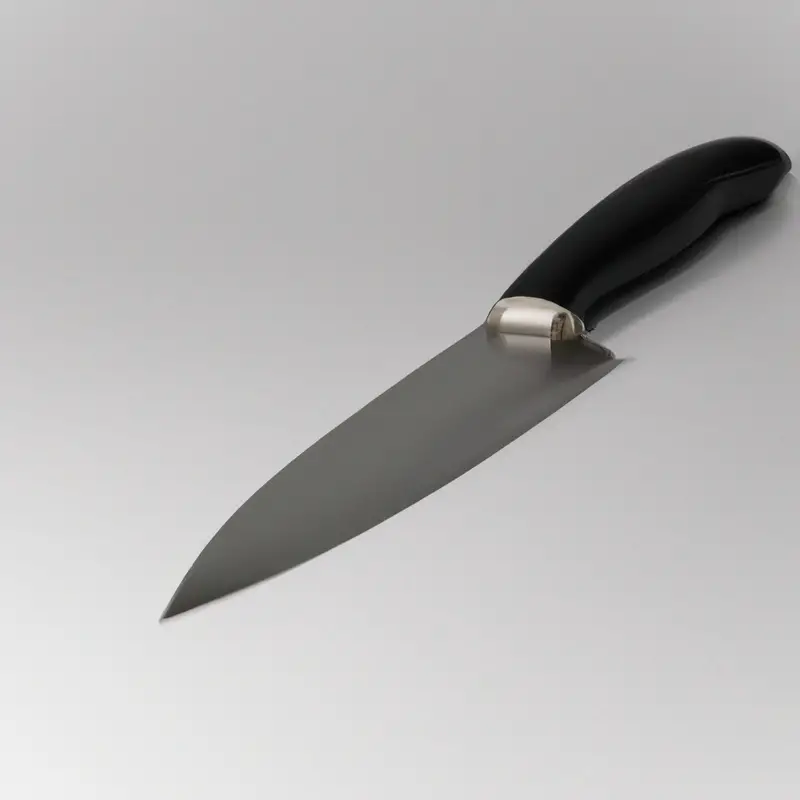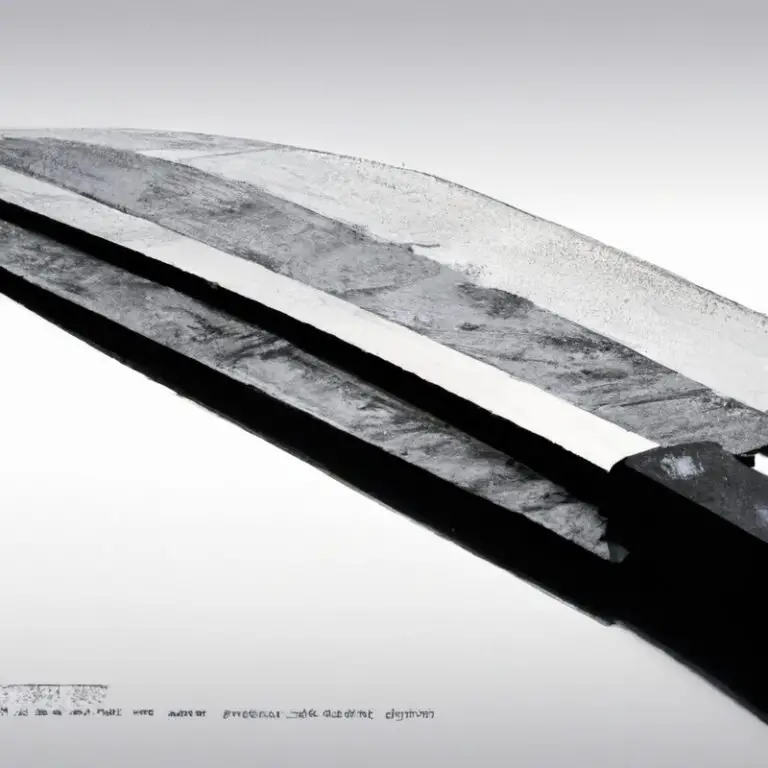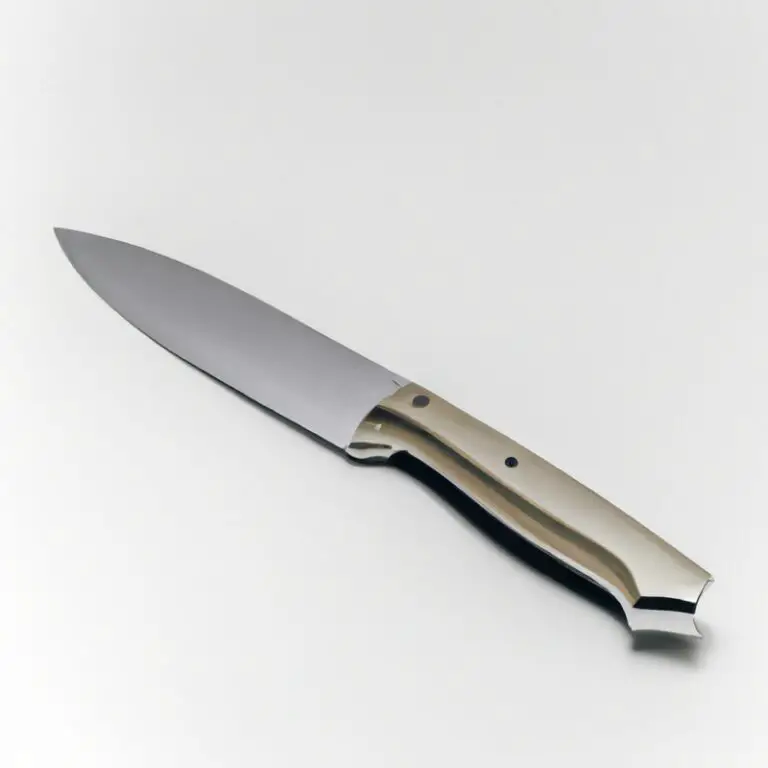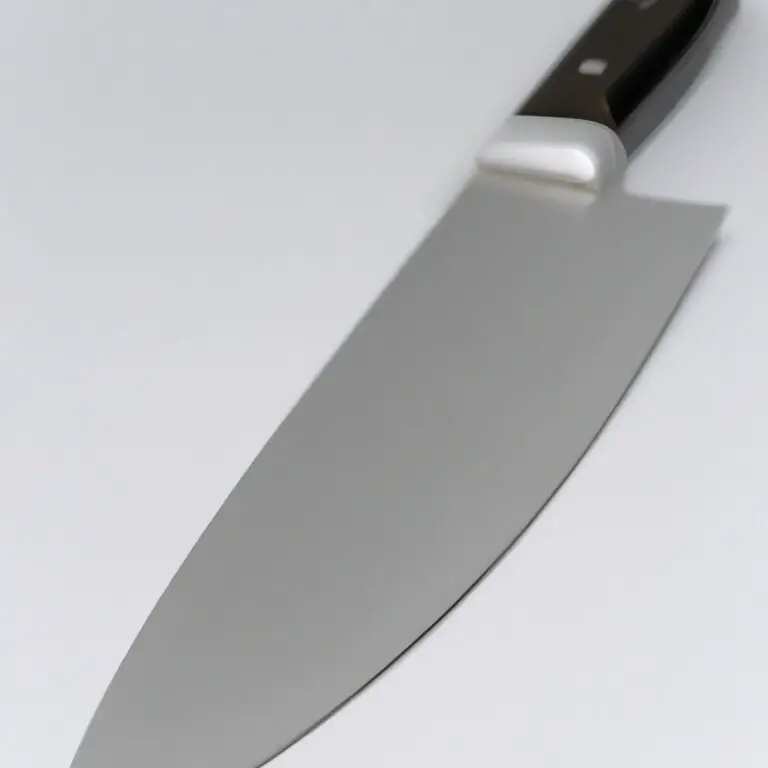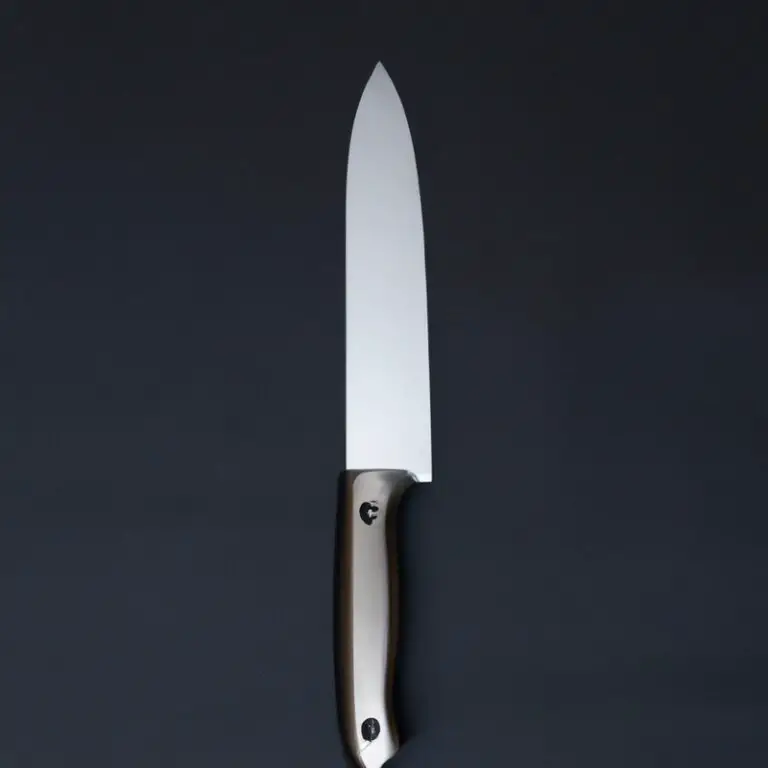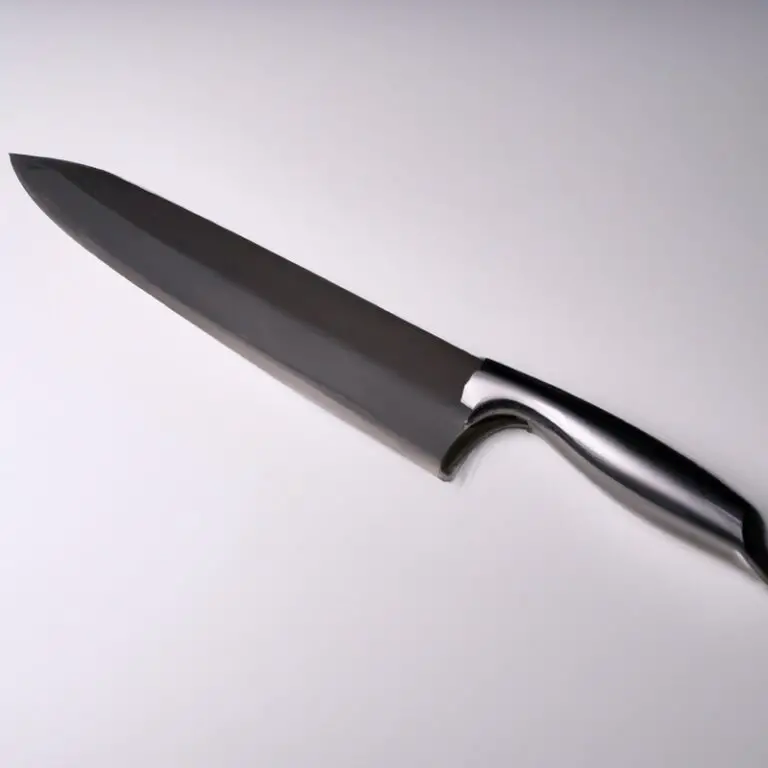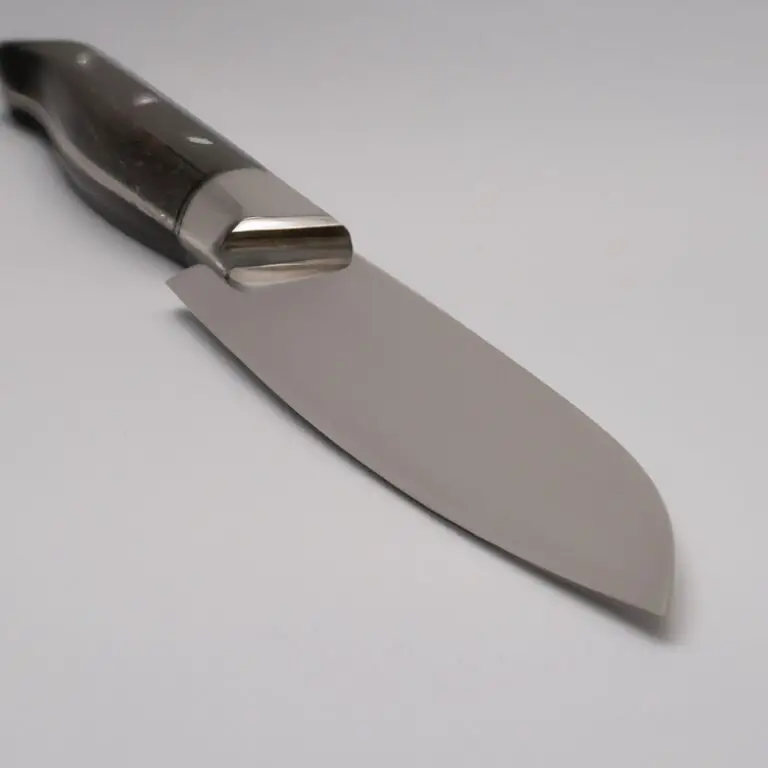How To Remove Stains From a Chef Knife Blade Without Scratching It? – Easy Tips!
Key Takeaways:
- Avoid using abrasive cleaners or scouring pads on your chef knife blade to prevent scratching.
- Try removing stains with a mixture of baking soda and water for a gentle, non-abrasive solution.
- Lemon juice or vinegar can also be effective for removing stubborn stains from a chef knife blade.
- Regular maintenance, including proper storage and cleaning after each use, can help prevent future stains.
A pristine, gleaming chef knife is a thing of beauty; functional, efficient, and a source of pride. Yet, with constant use and exposure to different food elements, it’s inevitable that stains will occur on your beloved blade.
The secret lies in proper maintenance- knowing how to remove stains without scratching it.
With household items right out of your kitchen, you can effortlessly clean and restore your knife to its former glory. Join me as we explore the best tips and tricks on how to clean your chef knife blade and avoid future stains.
| Method | Materials | Effectiveness |
|---|---|---|
| Dish soap and warm water | Dish soap, warm water, sponge | Good |
| Baking soda paste | Baking soda, water, cloth | Great |
| Vinegar and lemon juice | White vinegar, fresh lemon juice, cloth | Great |
| Bar Keepers Friend | Bar Keepers Friend, sponge | Excellent |
| Steel polish | Steel polish, cloth | Very effective, but not recommended for everyday use |
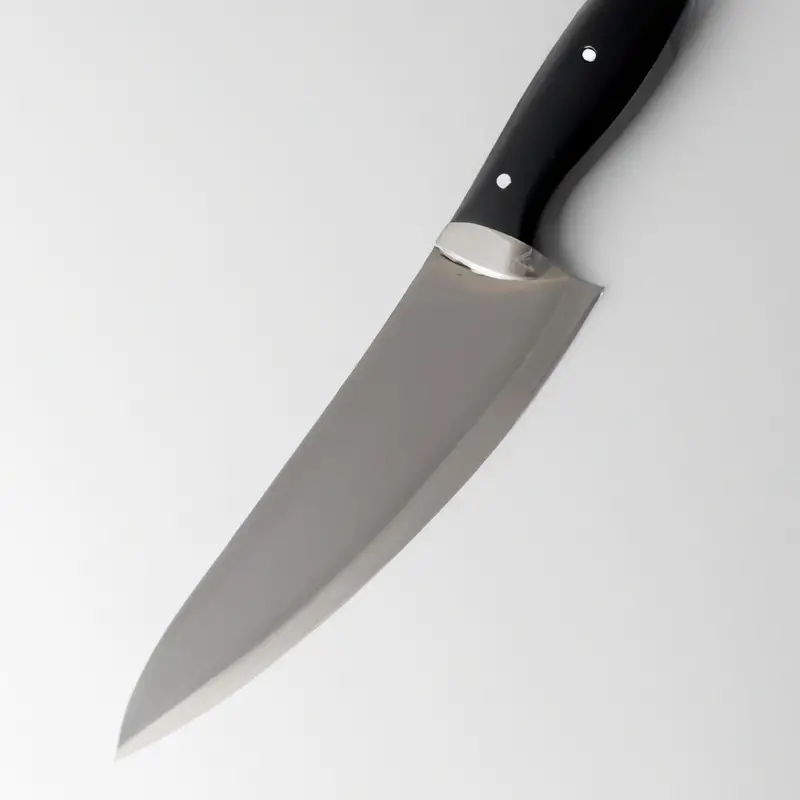
Understand the different types of stains that can occur on a chef knife blade
There are various types of stains that can occur on a chef knife blade. Some common types of stains include:
- Food stains: caused by food acids, proteins, and oils.
- Rust stains: caused by exposure to moisture or acidic substances.
- Discoloration: caused by improper cleaning or maintenance.
- Heat discoloration: caused by exposure to heat during cooking or from a dishwasher.
Understanding the type of stain on your knife blade is essential for selecting the appropriate cleaning method. It is crucial to avoid harsh chemicals and abrasive materials that can scratch the blade.
Instead, opt for household items or specialized cleaners designed for cleaning knife blades.
Proper maintenance, cleaning, and sharpening can prevent future stains and maintain a clean and sharp knife blade.
The importance of proper maintenance to prevent stains on chef knife blade
Proper maintenance is essential to prevent stains on a chef knife blade. Stains can easily occur due to exposure to acidic or corrosive foods and lack of cleaning.
Utilizing the appropriate maintenance techniques and tools, such as regular hand washing and drying, oiling the blade, and storing in a dry place, can significantly reduce the likelihood of stains.
Neglecting to maintain your chef knife blade can lead to discoloration and can even impact the knife’s performance. It is essential to invest time and effort into proper maintenance to ensure a long-lasting, functional, and stain-free chef knife.
How to remove food stains from a chef knife blade using household items
To remove food stains from a chef knife blade, there are several household items you can use. One of the most effective and accessible is white vinegar.
Simply dampen a cloth with vinegar and wipe the blade clean.
Another option is baking soda, which can be made into a paste with water and used to gently scrub stains away. Lemon juice is also effective in removing stains thanks to its natural acidity.
Another simple solution is using warm soapy water to clean the blade thoroughly.
Remember to dry the blade completely after cleaning it to prevent rust. By utilizing these household items and being diligent in maintaining your chef knife blade, you can keep it free from unsightly stains without damaging it.
The effectiveness of specialized cleaners for removing tough stains on a chef knife blade
Specialized cleaners are specifically formulated to dissolve tough stains on chef knife blades. These cleaners contain active ingredients that break down and remove stubborn stains, including rust, from the blade surface without causing damage.
When using specialized cleaners, it is crucial to follow the instructions carefully and use the recommended amount of cleaner.
Applying too much or leaving the cleaner on for too long can corrode the blade’s surface and cause permanent damage. Additionally, some specialized cleaners may not be suitable for use on certain materials, such as carbon steel.
Therefore, it is essential to choose a cleaner meant explicitly for the type of blade you have.
Overall, specialized cleaners are highly effective in removing tough stains from a chef knife blade without scratching it, but only if you use them correctly and choose the right one for your knife.
Removing rust stains from a chef knife blade: Tips and techniques
Removing rust stains from a chef knife blade can be tricky, but there are a few effective tips and techniques. Firstly, you need to soak the blade in a mixture of lemon juice, baking soda, and water for at least 15-20 minutes.
Then, use a toothbrush or a soft cloth to gently scrub the affected area.
If the rust stain is stubborn, you can use a rust remover specifically designed for knives. However, avoid using abrasive materials like steel wool or sandpaper as it can damage the blade.
After removing the rust stains, dry the blade thoroughly to prevent any further rusting.
Remember to store your knife in a dry place to prevent rust stains from forming.
Using abrasive materials to remove stubborn stains on a chef knife blade
Using abrasive materials to remove stubborn stains on a chef knife blade can be effective, but it should be done with caution. Abrasive materials like steel wool and sandpaper can scratch the surface of the blade, which can reduce its effectiveness and increase the risk of rust.
It is important to use a fine grit and to apply light pressure when using abrasive materials.
Start by cleaning the blade with soap and water and then use the abrasive material in a circular motion, focusing on the stained area. Rinse the blade with warm water and dry it thoroughly after using abrasive materials.
Remember that prevention is always better than a cure- it is easier to prevent stains from occurring on the blade than to remove them later.
The importance of avoiding using harsh chemicals to remove stains from a chef knife blade
The use of harsh chemicals to remove stains from a chef knife blade can lead to permanent damage to the blade, impacting its performance and longevity. The chemicals in these cleaners can strip the blade of its protective coating, leaving it exposed to rust and corrosion.
Harsh chemicals can also cause scratches, dulling the blade’s edge, and making it more difficult to sharpen and maintain.
To avoid damaging your chef knife blade, opt for milder cleaning solutions. Household items such as baking soda and vinegar can be effective cleaners without the risk of damage.
Simply mix a solution of warm water and a small amount of mild dish soap and use a soft cloth or sponge to gently scrub the blade.
For tougher stains, specialized cleaners may be necessary, but make sure to read the label carefully to avoid any harmful chemicals. Always test a small area of the blade first before using the cleaner on the entire blade.
Remember, prevention is the best defense against stains on a chef knife blade, so make sure to clean and dry the blade after each use and store it properly to avoid exposure to moisture.
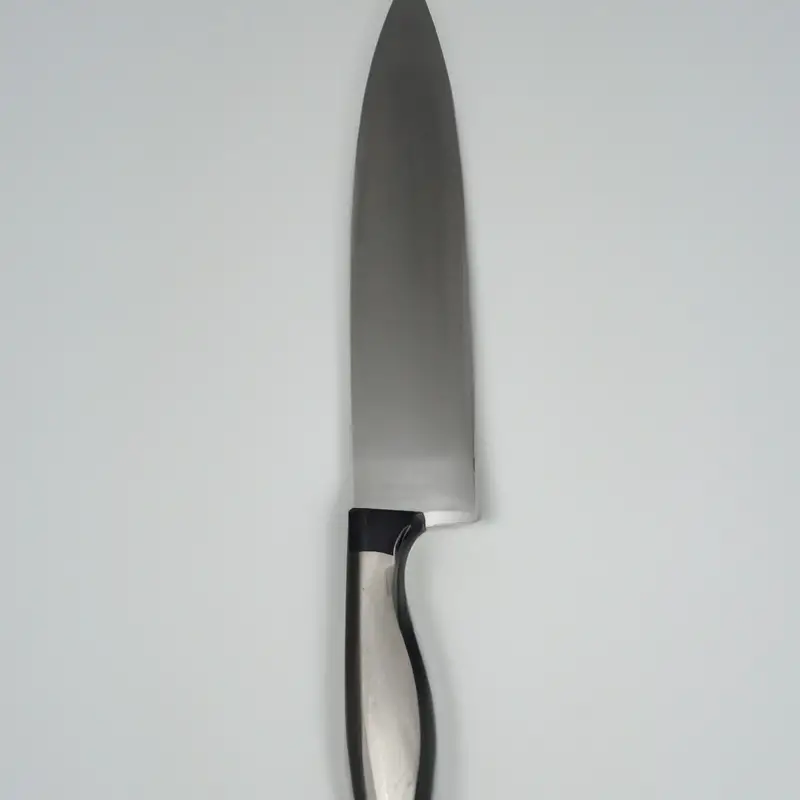
Tips for preventing future stains on your chef knife blade
To prevent future stains on your chef knife blade, here are some useful tips to consider:
- Wipe your knife after every use with a clean, dry cloth to remove any residual food particles that can cause stains.
- Avoid cutting acidic food items for long periods, like lemons or tomatoes, as they can cause discoloration on the blade.
- Store your chef knife in a dry place to prevent rust and patina from forming on the blade.
- Use a cutting board made of materials that won’t stain your knife blade, like wood, plastic, or bamboo.
- Avoid using the dishwasher to clean your chef knife as the high temperature and harsh detergents can damage the blade and cause stains.
- Sharpen your chef knife regularly to maintain the sharpness of the blade, which makes it easier to cut through food and less likely to stain.
By following these preventive measures, you can prolong the life of your chef knife and maintain its sharpness and appearance.
The role of sharpening in maintaining a clean chef knife blade
The role of sharpening in maintaining a clean chef knife blade cannot be overstated. A sharp knife cuts through food with ease, reducing the chances of staining.
A dull blade, on the other hand, needs more pressure and often leaves behind marks and stains.
Moreover, a dull knife is more likely to slip, which can increase the risk of injury. Therefore, regularly sharpening your chef knife is essential for maintaining its cleanliness and preventing stains.
Sharpen your knife with a whetstone or honing steel to maintain its sharpness and keep it stain-free.
How frequently to clean your chef knife blade to prevent stains
To prevent stains on your chef knife blade, it’s important to clean it frequently. Ideally, you should clean your knife after every use to prevent any stains from setting in.
However, if you use your knife multiple times a day, cleaning it after each use may not be practical.
In such cases, it’s best to clean your knife at the end of each day, making sure to thoroughly wipe off any food debris or moisture. Although stainless steel knives are less prone to stains as compared to carbon steel knives, they too need to be cleaned regularly.
In general, it’s best to clean your chef knife blade every two to three days even if it hasn’t been used.
Proper maintenance of your knife will not only prevent stains, but also make it last longer. To ensure that your knife stays clean, you should also avoid leaving it wet or damp for long periods of time.
Moisture can cause bacteria buildup leading to stains or even rust.
After every use, dry your knife with a clean, dry towel or cloth and store it in a dry and ventilated space. Additionally, it’s important to have a maintenance routine for your knife that involves regular sharpening.
A sharp knife is less likely to develop stains as it doesn’t require as much force or pressure while cutting.
However, be careful not to over-sharpen your knife as it can damage the blade. Overall, the key to preventing stains on your chef knife blade is to maintain proper cleaning and maintenance routine.
By doing so, you’ll ensure that your chef knife remains in top condition and performs optimally for a longer period.
Final Verdict
Maintaining a stain-free chef knife blade requires attention to detail and regular maintenance. By understanding the different types of stains that can occur, choosing the right tools and methods for cleaning, and sharpening regularly, you can extend the life of your chef knife and ensure peak performance.
With the tips and techniques outlined in this article, you can confidently remove stains from your chef knife blade without the risk of scratching it.
Remember, taking care of your chef knife is not only important for your culinary endeavors but also for your safety in the kitchen. Trust in these techniques and tools for a clean and lasting chef knife.

